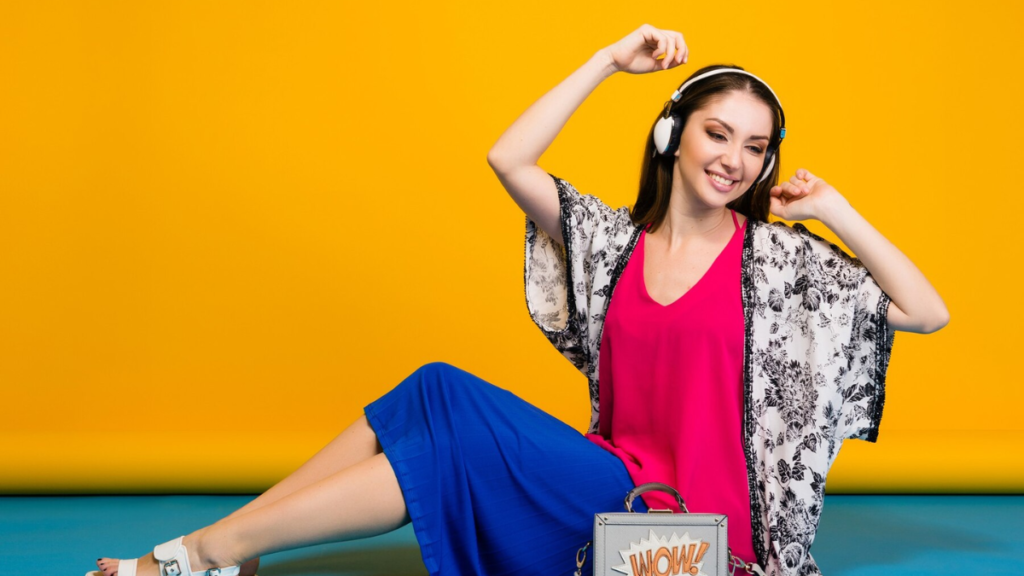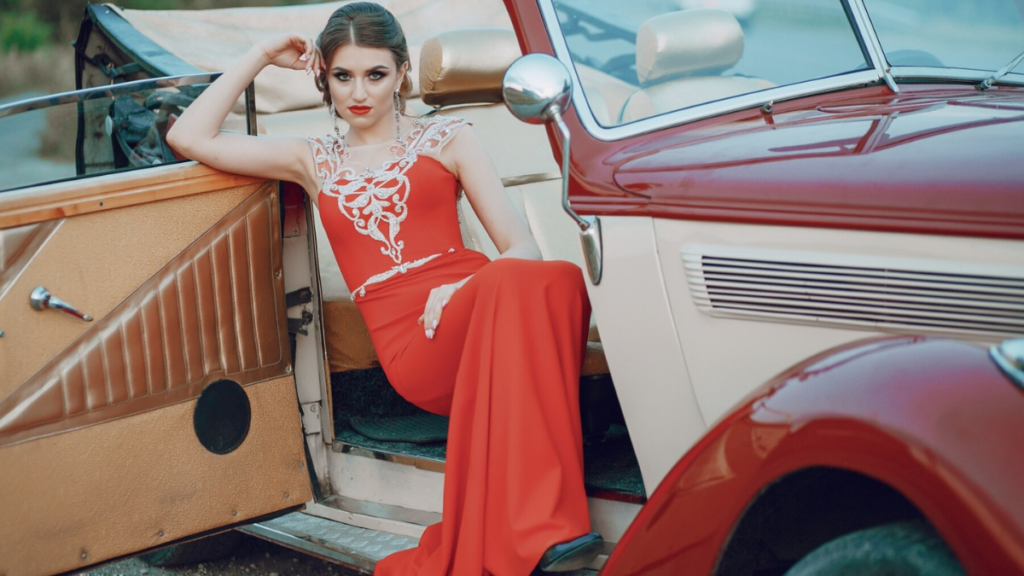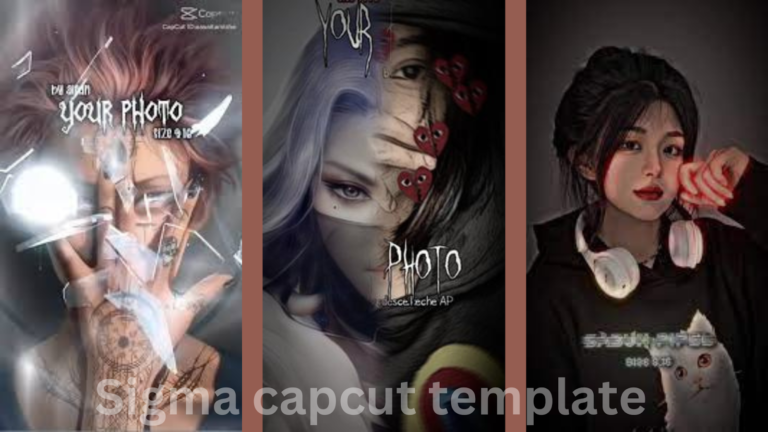
Fashion in the 60s was more than just clothing—it was a statement of change, individuality, and revolution. At the beginning of the decade, styles were still influenced by the conservative 50s, but by the end of the 60s, fashion had transformed into something vibrant, expressive, and bold. Whether it was the sleek mod look, the bohemian vibes of the hippie movement, or the futuristic designs influenced by the space race, fashion in the 60s broke all the rules and set new standards for personal expression.
Let’s take a closer look at how fashion in the 60s changed the way people dressed and influenced the way we see style today.
The Early 60s: From Classic to Mod
In the early 1960s, fashion was still heavily influenced by the styles of the previous decade. Women often wore elegant dresses with nipped-in waists, full skirts, and gloves—think Jackie Kennedy’s classic style. Men’s fashion was equally refined, featuring slim suits, narrow ties, and polished shoes.
However, as the decade progressed, fashion began to change. The “mod” look, which originated in London, quickly became a defining style of the early 60s. Mod fashion was sleek, minimal, and often featured geometric patterns. This style was popularized by young people, particularly teenagers, who were looking to break away from the more formal styles of their parents. The mod look typically included:
- Mini skirts: Mary Quant is credited with inventing the mini skirt, which became a symbol of youthful rebellion and freedom.
- Bold patterns: Mod clothing often featured striking geometric patterns, bright colors, and simple lines.
- Go-go boots: Knee-high boots, often in white or shiny materials, became a staple of the mod wardrobe.
Men’s mod fashion also embraced slim silhouettes, with sharply tailored suits, turtlenecks, and even colorful accessories like scarves and hats. The mod movement represented a shift towards youthful, fun fashion that was no longer just for the wealthy elite—it was for everyone.
The Influence of the Space Race
The 60s were a time of rapid technological advancement, and the space race between the United States and the Soviet Union had a major impact on fashion. Designers began to incorporate futuristic themes into their collections, creating clothing that looked like it was ready for outer space.
- Metallic fabrics: Shiny, silver materials were used to create dresses, skirts, and even accessories, giving a space-age feel to everyday outfits.
- A-line shapes: Dresses and skirts in simple A-line shapes were reminiscent of the sleek, minimal lines of space suits.
- Plastic and vinyl: These unconventional materials were used in both clothing and accessories, adding a futuristic edge to the 60s fashion scene.
Fashion in the 60s wasn’t just about looking good—it was about looking forward to the future, and designers embraced the idea that clothing could reflect the excitement and possibilities of the space age.

Hippie Fashion and the Counterculture Movement
As the 60s progressed, a new style began to emerge, driven by the counterculture movement. The late 60s saw the rise of the hippie movement, which embraced peace, love, and a rejection of mainstream culture. This movement had a profound impact on fashion, as hippies sought to express their individuality and connection to nature through their clothing choices.
Hippie fashion was often inspired by non-Western cultures and focused on natural, flowing materials. Some key elements of hippie fashion included:
- Tie-dye: Bright, swirling patterns were a staple of hippie clothing, symbolizing freedom and creativity.
- Bell-bottom pants: These wide-legged pants became iconic in the late 60s, often paired with simple, comfortable tops.
- Fringed jackets and vests: Fringes were a popular decoration, especially on suede jackets, adding a sense of movement and bohemian style.
- Flowers and natural materials: Hippies often wore floral prints and adorned themselves with flower crowns, beads, and jewelry made from natural materials.
Hippie fashion wasn’t just a style—it was a lifestyle. It represented a rejection of consumerism and a desire to return to a simpler, more harmonious way of living. This influence continued into the 70s, with bohemian and ethnic-inspired clothing becoming even more mainstream.

The Legacy of 60s Fashion
The 60s were a time of rapid change, and the fashion of the decade reflected this. Whether it was the bold colors and sharp lines of mod fashion, the futuristic designs inspired by the space race, or the free-spirited, nature-focused hippie style, 60s fashion was all about breaking the mold and embracing individuality.
Today, we still see the influence of Fashion in the 60s in modern clothing. The mini skirt remains a wardrobe staple, bold patterns and geometric designs are popular in both clothing and home decor, and the bohemian, festival-inspired styles of the late 60s have found a new life in today’s fashion scene.
1. What was the most iconic fashion trend of the 60s?
The mini skirt, popularized by designer Mary Quant, was one of the most iconic fashion trends of the 60s. It represented youth, freedom, and a break from traditional styles.
2. How did the space race influence 60s fashion?
The space race inspired futuristic designs in 60s fashion, including metallic fabrics, plastic materials, and sleek, minimal shapes that reflected the excitement of space exploration.
3. What is mod fashion?
Mod fashion originated in London and was characterized by slim silhouettes, geometric patterns, and bold colors. It was popular among young people in the early 60s and represented a fun, modern approach to fashion.
4. How did the hippie movement affect Fashion in the 60s?
he hippie movement embraced natural, flowing fabrics, tie-dye patterns, and a bohemian style that rejected mainstream consumerism. Hippie fashion became a symbol of peace, love, and individuality.
5. Are 60s fashion trends still popular today?
Yes, Fashion in the 60s trends are still popular today. Mini skirts, bold patterns, and bohemian styles continue to influence modern fashion, showing the lasting impact of the 60s.
Conclusion
Fashion in the 60s was a reflection of the dramatic social and cultural changes happening around the world. From the sleek, futuristic styles of mod fashion to the free-spirited, nature-inspired looks of the hippie movement, the decade was full of bold statements and groundbreaking trends. Even today, the influence of 60s fashion can be seen in modern styles, proving that this era was truly one of a kind.
For more inspiration on 60s fashion, check out resources like milf hunting in another world or visit fashion museums that feature iconic pieces from the decade.






